15 Interesting Facts About the Amazon River
Written by Serene Joshua, contributing writer.
The Amazon river is the largest river in terms of the discharge volume of water. It is also the second-longest river in the world, after the Nile.
Written by Serene Joshua, contributing writer.
Before we get to the interesting facts about the Amazon river, here’s a nice-to-know fun fact (and it’s sort of related): Approximately 71% of the Earth is covered in water.
This water comes from different water bodies like rivers, oceans, lakes, seas, etc., and it’s important for us to know about these water bodies. One of these is the Amazon river.
Read on to know more Amazon river facts for kids
Key facts about the Amazon river
Here’s a look at one such amazing water body – the Amazon river! Here we look at a lot of fun facts about the Amazon river, and even details like, how deep is the Amazon river, who it is named after, how long is the Amazon river, who discovered it, and why the river has no bridges. It is home to many species of fish and other aquatic animals, including the pink river dolphin.
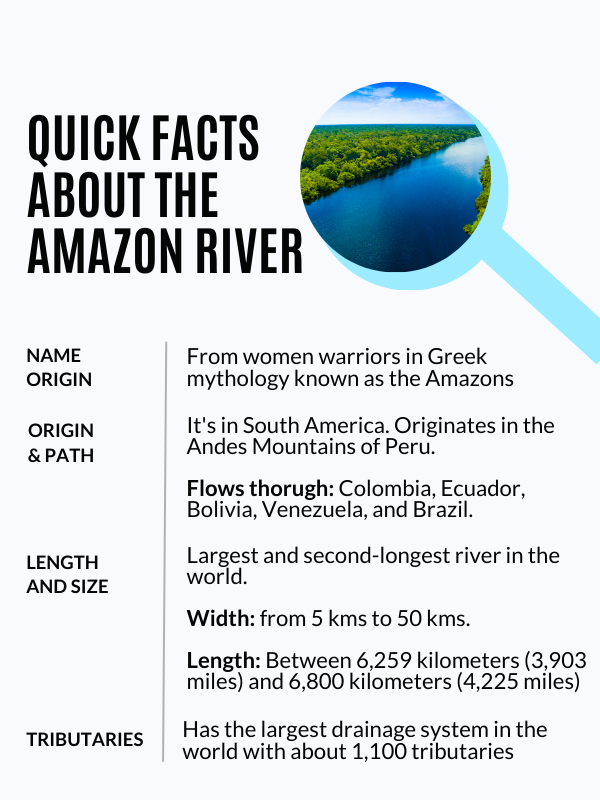
Read on to know more facts about the amazon river for kids
An introduction to the Amazon river

Where is the Amazon river located?

Since it is a big river, it isn’t located in just one area but runs through many countries. But, to know where the Amazon river is located, scientists look at the starting and ending points of the river.
To put it simply the Amazon river is located in the continent of South America in its northern part, and it flows through many countries.
But, it’s here’s the thing, there been a debate about where does the Amazon river start!
For many centuries experts have debated over the source of the river and there are difference in opinion about Amazon river’s origin (the exact origin that is). Since the Amazon river is so complex, and remote explorers of the river have suggested many different sources.
But, what is known is this:
The Amazon river originates all the way in Andes Mountains in Peru and flows towards the east making its journey running through the countries of Colombia, Ecuador, Bolivia, Venezuela, and Brazil.
After this long journey, it finally empties itself into the vast Atlantic ocean. So, as you can see the Amazon river doesn’t just stay in one country but runs through a huge area of land spanning across many countries. So roughly it travels about 6,400 km!
Okay, so let’s get a little more detail on the locations of where this river starts and ends.
The starting point has been debated but the most widely held theory is that it starts in Lake Ticlla Cocha which is located in the waters of the Apurimac River.
To put it simply the end point of the river is in the Marajo Bay of the Atlantic Ocean but it’s a bit more complicated than that.
Since the Amazon river is extremely long with many different channels, there are actually three main outlets that empty into the Atlantic ocean. Two of them are in the northern areas of the Marajó Islands in Brazil and the other one is in the south of the Island, near the Para River. Scientists believe the northern outlets of Marajo to be the endpoint, as it is also the furthest from the starting point of the river.
How long is the Amazon river?

The Amazon river is the second-longest river in the world. However, there have been differences of opinion about its length, with some arguing that it is longer than the Nile and hence the longest river in the world.
It is generally accepted to be somewhere between 6,259 kilometers (3,903 miles) and 6,800 kilometers (4,225 miles) long.
The debate over its length
As mentioned before, the problem with figuring out how long the river is because of its starting and ending points. That’s always tricky, since rivers often start in remote and mountainous regions and it’s hard to pinpoint the exact starting point.
However, in 2007 a group of scientists traced the startpoint of the river to a snow-capped mountain located in the south of Peru, hence changing the length of the river.
The team of scientists was led by Guido Gelli, who is the director of science at the Brazilian Institute of Geography and Statistics, and according to their results the Amazon river is 6,800 kilometers long, making it longer than the Nile which is 6,695 kilometers.
However, this is still up for debate as these results were never officially published.
It is also one of the most challenging rivers to get to because in order to get to it you will have to go through the Amazon rainforest which is the largest rainforest in the world!
Read on to know more as we bring you more details and 15 fun facts about the Amazon River!
What you must know is that the Amazon river is part of the Amazon rainforest and we cannot talk about the river without talking about the Amazon rainforest – the largest rainforest in the world that is home to a large diversity of plant, animal, bird, and water animal species.
How wide is the Amazon river?

If you are wondering about Amazon river’s width then you should know that it varies according to where it is and also the weather.
In the dry season, the width of the Amazon River tends to be somewhere between 4 km to 5 km in places. However, in the rainy or wet season, the river’s width can go up to 50 km!
Here’s why this river is so important
About one-sixth of all fresh water that drains into the oceans of the world goes through the Amazon delta, which finally meets the Atlantic Ocean.
15 Fun Facts About the Amazon river
Here are some quick facts about the Amazon river.

1. The Amazon river is the second longest river on Earth

If you have a question about the Amazon river’s length – then here’s the answer.
The Amazon is 6,400 kilometers long, second only to the river Nile in Egypt which is 6,650 kilometers.
Some scientists believe that it is actually the longest river in the world according to a recent study, but there’s a bit of conflict on this one!
2. It flows through six countries

Due to its length, the Amazon river runs through six countries in South America – Brazil, Peru, Colombia, Ecuador, Bolivia, and Venezuela.
3. The Amazon river was discovered by a Spanish explorer
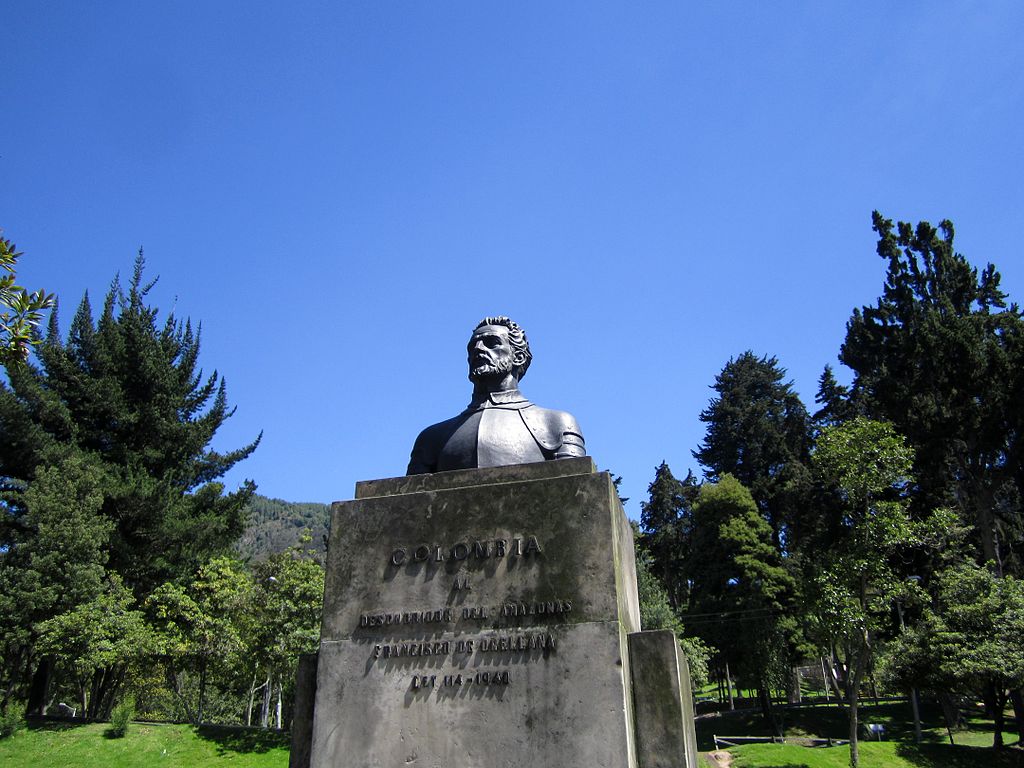
Francisco de Orellana was a Spanish explorer who was the first to explore the Amazon Rainforest and river in 1541. He also gave the Amazon its name.
The river gets its name from Greek mythology

Francisco de Orellana, the Spanish explorer, named the river after the tribes of female warriors in Greek mythology, known as the Amazons. The reason he gave this name was because he is said to have encountered a female tribe of warriors while he was exploring the rainforest, whom he compared to the Greek warriors.
3. The Amazon river has no bridges

Since the Amazon river flows along remote forests there are hardly any populations of people living along the river and because of this, there are no bridges. Instead, people use ferries and steamboats to get across this river.
4. The river once flowed in the opposite direction

The river currently flows to the east into the Atlantic ocean but about 10 million years ago it flowed toward the west. The earlier flow to the west was disrupted due to the formation of the Andes Mountains which blocked it from emptying into the Pacific Ocean.
5. It holds the largest river dolphin species
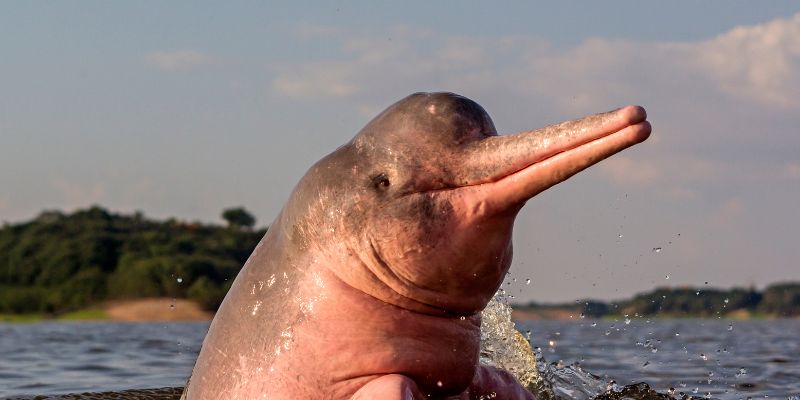
You may have heard about the Amazon pink river dolphin.
The pink river dolphin is found in the Amazon river. Its is the largest species of dolphin that can grow up to 9 feet and weigh about 180 kilograms!
6. Manaus is the largest city on the Amazon River.
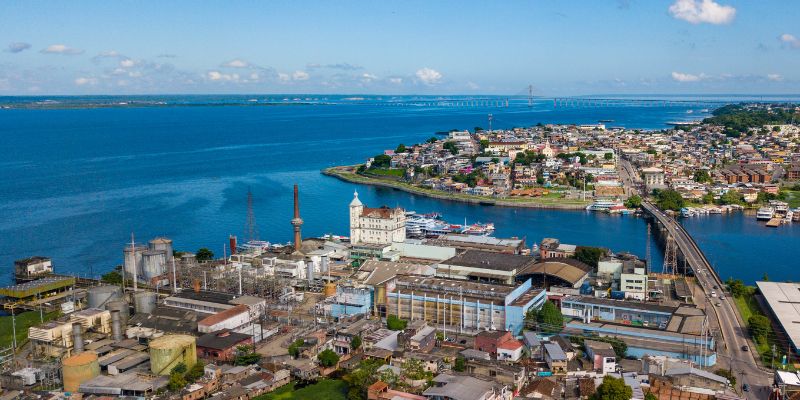
As mentioned before, there isn’t much of a population along the river. However, the largest city along the river is Manaus. This city has a population of 1.6 million people and is an important center for trade.
7. The birthplace of the Amazon river is called the Sacred Headwaters
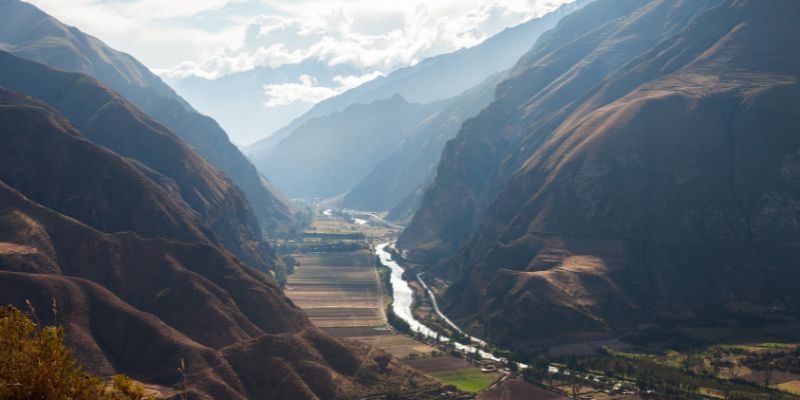
North of the Amazon forest, in Peru and Ecuador there is an area of about 74 million acres known as the sacred headwaters. This area is considered the birthplace of the Amazon river and is home to about 500,000 indigenous people from 20 different nationalities.
8. The river has the largest freshwater species in the world
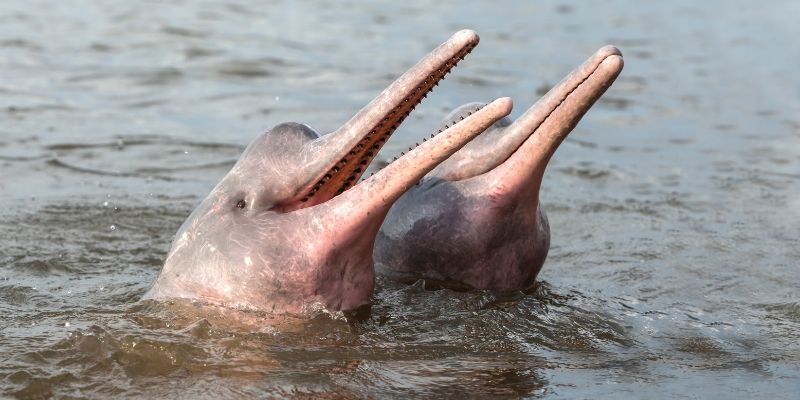
The Amazon river is home to the largest number of freshwater fish species in the world, more than 3000! Some of the more interesting ones are piranhas, electric eels, Pirarucas, armored catfish, Bullshark, and pancake stingrays. Also, as mentioned earlier, the Amazon river dolphin is also a well known species.
9. The river was once called the Marañón

The Amazon was called Maranon by early European settlers. In fact, in some parts of Peru, it is still called by that name. Later it came to be known as Rio Amazonas in Spanish and Amazon in English.
10. Amazon River is the largest river in terms of discharge

Although it is not the largest river in the world, as this title is taken by the Nile, the Amazon river is the largest and fastest river in terms of the discharge volume of water.
Discharge volume of water refers to the volume of water transported each second. The Amazon has a discharge of 215,000 cubic meters per second, followed by our very own Ganga river
11. It is the largest drainage system in the world

The Amazon river is responsible for 20% of discharge from rivers into oceans in the world, making it the largest drainage system.
The Amazon river rises in the rainy season because 40% of all of South America’s water flows to this River. This means that many smaller rivers flow through the Amazon river to empty itself out into oceans.
12. It will take 4 months to swim down the Amazon river

If you wanted to swim down the Amazon on your own, which is not recommended considering the piranhas, it would take you about 120 days with no breaks. But, guess what….
13. An athlete broke the record by swimming through this river
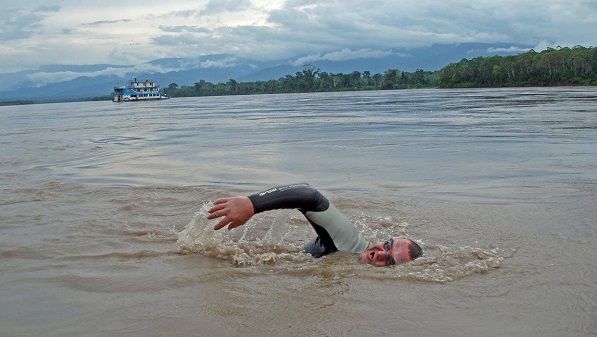
Although it is difficult for an average person to swim across this river, a Slovenian athlete named Martin Strel completed a part of this swim in 66 days.
Strel swam a total of 5,268km of the Amazon making him the only human to cover that much of the river by swimming. He even won a Guinness World Record for it
14. The river has over 100 dams

Image Source: By Vice-Presidência da República via Wikimedia commons
The currents and volume of water in the amazon are really strong! But, this provides the perfect source of energy. There are over 100 dams in the Amazon river that harness the hydropower of the river and use it for electricity!
However, fishermen in Brazil have raised the issue of the negative effects these dams have on the fish.
The biggest Dam is the Belo Monte Dam in Brazil
15. The Amazon needs the Sahara to survive
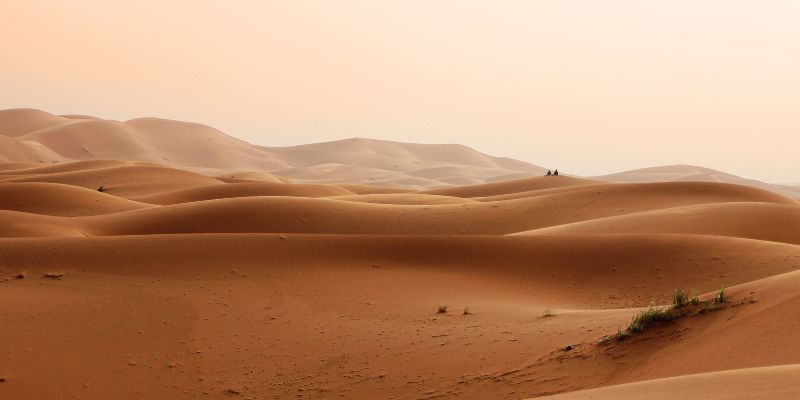
Sounds a bit impossible doesn’t it? Why would a rainforest need a desert? Well, the Amazon rainforest and river of the Amazon need very important minerals like phosphorous to maintain its ecosystem. They get these minerals from sands that travel through winds from the Sahara desert, and through the Atlantic Ocean to the Amazon.
These were some amazing fun facts about the amazon river. Let us know what you think!

Better Your Child’s G.K. In 3 Minutes – Get This Free Newsletter
Get fun facts, simple and easy news, quizzes, and lots of other interesting things to read in your mailbox – for free! It’s what we call GK-on-the-go!
I Kid You Not now has a large readership across India and also parts of the world. If you want to write for us, you can submit your story here. You can also apply to become a news anchor. Apply here



Comments